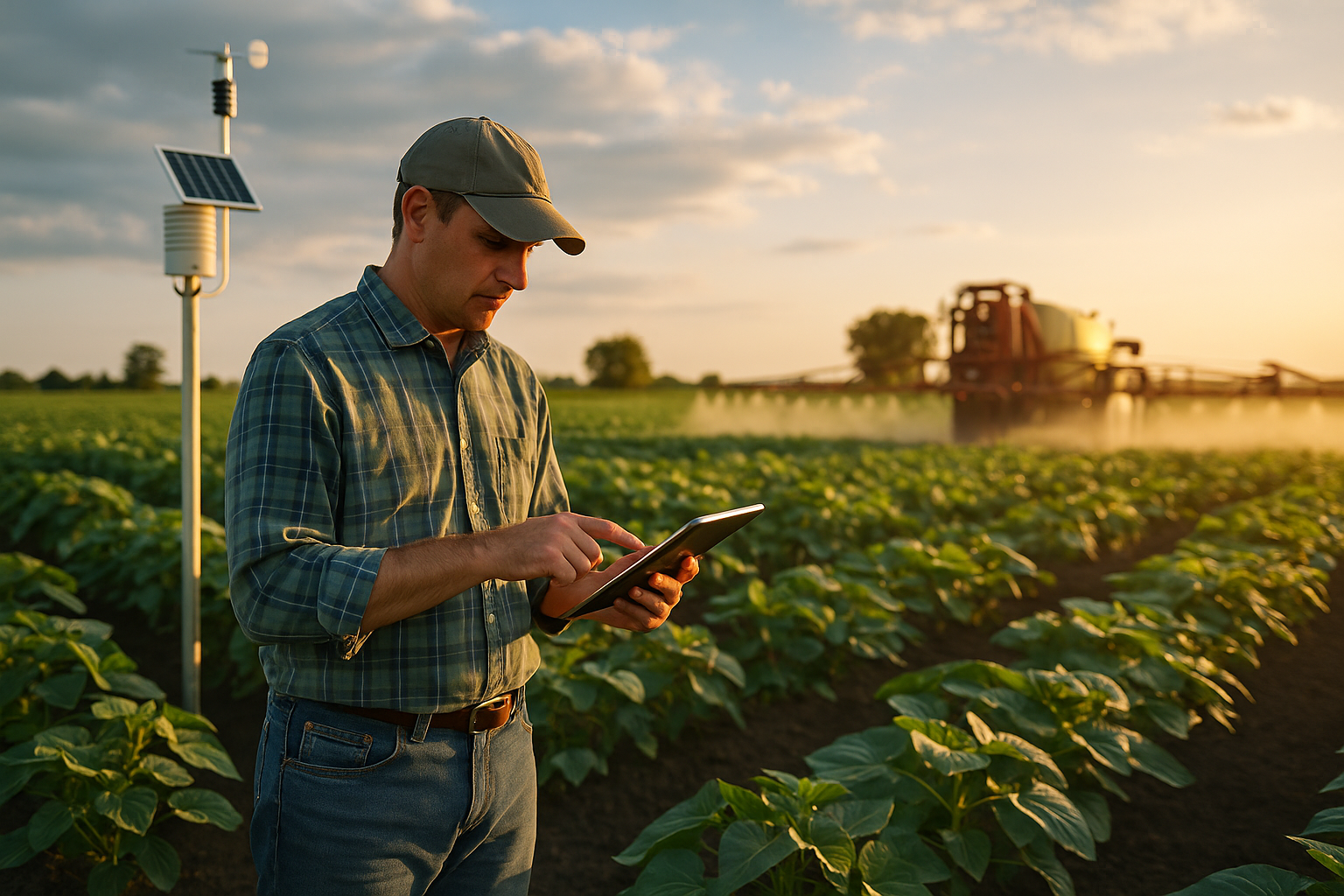Digital twins driving precision, sustainability and AI integration in agriculture
China leads the field, producing the highest number of research outputs, followed by the United States, the Netherlands, Germany, and India. While these countries dominate in volume, collaboration patterns reveal regional nuances. European nations, including the UK, Norway, and Switzerland, demonstrate stronger cross-border partnerships, while efforts in China and the USA remain largely localized. This pattern underscores the uneven global landscape, where developed regions lead innovation, while areas such as Africa, South America, and Central Asia remain underrepresented due to limited digital infrastructure and funding gaps.

The application of digital twin technology in modern agriculture is gaining momentum, reshaping how farmers monitor, simulate, and optimize agricultural systems. In a new bibliometric review, researchers examine the accelerating research landscape and future opportunities in this emerging field.
The comprehensive analysis, titled “Application of Digital Twin Technology in Smart Agriculture: A Bibliometric Review” and published in Agriculture (2025, Vol. 15, Issue 17), provides a quantitative and thematic roadmap for researchers, practitioners, and policymakers seeking to navigate this dynamic field.
Global growth and emerging leaders
Research into digital twins, virtual replicas of real-world farming systems continuously updated with real-time data, has expanded rapidly since 2018, with an annual growth rate of 27.24 percent. The review highlights that this surge aligns with advances in Internet of Things (IoT) infrastructure, artificial intelligence (AI), and affordable sensor technology that collectively drive digital transformation in agriculture.
China leads the field, producing the highest number of research outputs, followed by the United States, the Netherlands, Germany, and India. While these countries dominate in volume, collaboration patterns reveal regional nuances. European nations, including the UK, Norway, and Switzerland, demonstrate stronger cross-border partnerships, while efforts in China and the USA remain largely localized. This pattern underscores the uneven global landscape, where developed regions lead innovation, while areas such as Africa, South America, and Central Asia remain underrepresented due to limited digital infrastructure and funding gaps.
Institutional leadership is also concentrated. Wageningen University in the Netherlands and the Norwegian University of Science and Technology stand out as the most prolific institutions, reflecting a centralized research focus in parts of Europe. In contrast, China and the USA show a dispersed network of smaller research groups contributing collectively to the growing literature.
Thematic Clusters and Core Technologies
The analysis identifies seven thematic clusters that define the scope of digital twin research in agriculture. These clusters reveal the breadth of applications and the convergence of multiple technological domains.
The first and largest cluster encompasses key technologies and applications, including predictive maintenance, renewable energy integration, and simulation models designed to optimize farming efficiency. Another significant cluster focuses on intelligent systems and decision support, where multi-agent systems and knowledge bases are applied to precision farming operations.
Technological convergence and environmental integration emerges as a third cluster, highlighting the integration of IoT, robotics, and environmental monitoring to enhance productivity and resilience. Research in controlled environment agriculture is also gaining traction, particularly in high-value settings such as greenhouses and plant factories, where high levels of automation and sensor deployment facilitate digital twin adoption.
Other clusters include remote sensing and data-driven monitoring, which leverage drone and satellite data; sustainability and policy-oriented research, focusing on digital twins as tools for climate-smart agriculture; and food systems and infrastructure monitoring, where digital models support supply chain traceability and logistics optimization.
Core technologies such as sensors, AI, machine learning, and cyber–physical systems play a critical role in enabling these applications. Sensors provide the essential data streams, while AI and machine learning process and analyze large volumes of complex information for predictive and prescriptive insights. Cyber–physical systems integrate computational algorithms with physical processes, creating feedback loops that allow real-time adjustments in crop and livestock management.
Research Gaps, Challenges, and Future Directions
While research activity has surged, the review points to notable gaps that present opportunities for innovation. One key finding is the limited exploration of digital twin applications in livestock management, irrigation systems, and post-harvest logistics. These areas, which are integral to global food systems, remain underrepresented in the current literature.
Another challenge lies in scalability and accessibility. Most digital twin frameworks remain cost-intensive and complex, making them more suitable for large-scale or capital-intensive operations such as commercial greenhouses and precision crop farms. Smallholder farmers, who represent a significant portion of the global agricultural community, face barriers in adopting these advanced systems due to cost, limited connectivity, and lack of technical expertise.
Technical hurdles also persist. The lack of interoperability between systems, data privacy concerns, and inconsistent connectivity in rural areas hinder seamless integration and real-time operation of digital twins. Overcoming these barriers will be critical for broader adoption and practical utility in diverse agricultural contexts.
Future efforts, the authors suggest, should focus on the development of low-cost, scalable digital twin frameworks that could democratize access, enabling small and medium-sized farms to benefit from data-driven decision support systems. Integrating edge AI for real-time analytics and multi-agent systems for autonomous operations could enhance system efficiency and responsiveness. There is also a growing interest in climate resilience and renewable energy integration, with digital twins playing a pivotal role in modeling climate impacts, optimizing resource use, and supporting sustainability goals.
Additionally, the expansion of digital twin applications to food supply chains offers promising avenues for reducing waste, improving logistics, and enhancing traceability. The study notes emerging applications in simulating distribution networks, monitoring quality during storage and transport, and supporting decision-making in complex, globalized supply chains.
- FIRST PUBLISHED IN:
- Devdiscourse










